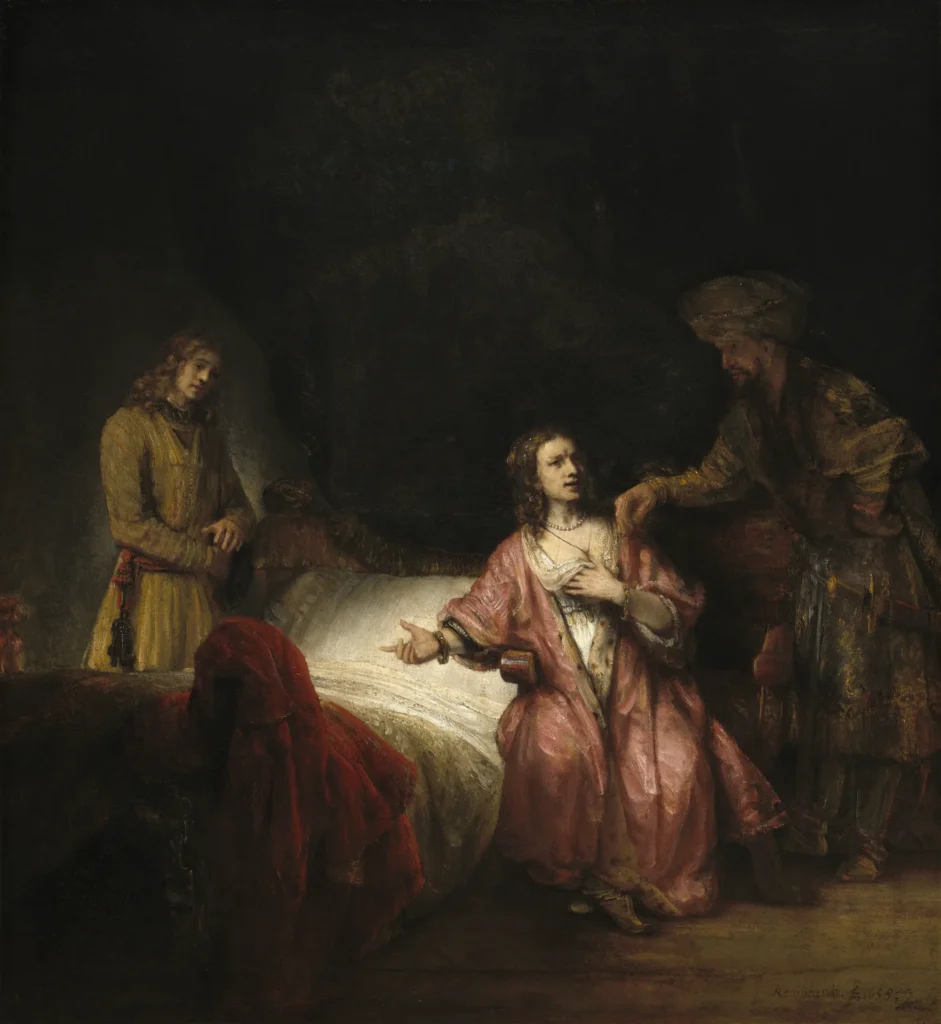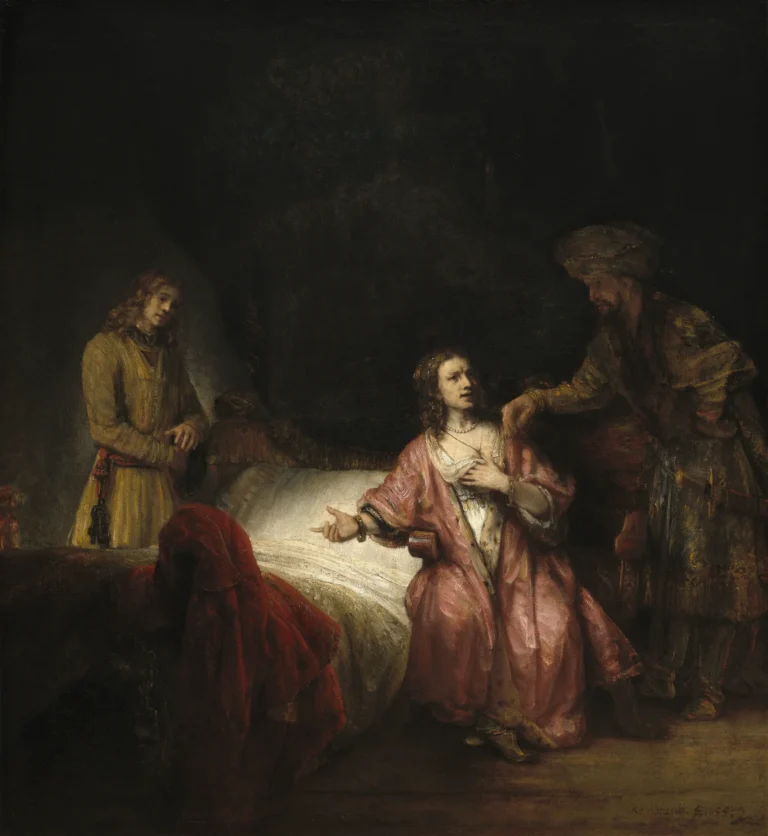Joseph Accused by Potiphar's Wife
In Joseph Accused by Potiphar's Wife. Rembrandt van Rijn dramatically illustrates a key moment from the biblical narrative in Genesis 39. Created in 1655, the painting captures Potiphar's wife wrongfully accusing Joseph of attempted violation, with Rembrandt opting to include Joseph in the scene, creating heightened dramatic tension. The artwork's intricate use of light and shadow signifies moral complexities and adds emotional weight, marking it as a notable exploration of human emotions and ethical dilemmas within biblical contexts.
Year 1655
About the Artwork
This painting is a profound exploration of betrayal, moral consequence, and the intricacies of human emotion. In the story from Genesis, Potiphar’s wife, spurned by Joseph's rejection, falsely accuses him of wrongdoing. Rembrandt's choice to depict Joseph in the moment of accusation—absent from the biblical text—invites viewers to ponder the psychological impact of the accusation on both characters. The positioning of her finger pointing at Joseph, combined with the drama of his expression, creates tension visually and emotionally, allowing a deeper contemplation of the themes of innocence and guilt. The work links to contemporary themes in Dutch literature through connections to Joost van den Vondel's play, providing a rich contextual backdrop for the painting's creation.
Did You Know
Rembrandt’s portrayal of Potiphar’s wife invites contemplation on gender dynamics and the power play in relationships, highlighting how narrative can be influenced by the perspective of the accuser.
Rembrandt was renowned for his innovative use of chiaroscuro, the technique of dramatically contrasting light and dark, which he employed to emphasize emotions and moral dilemmas in his works.
The painting’s context is enriched by its connection to Joost van den Vondel’s play, reflecting how artistic expressions in the period often intertwined across mediums, enhancing the narrative depth of biblical themes.










